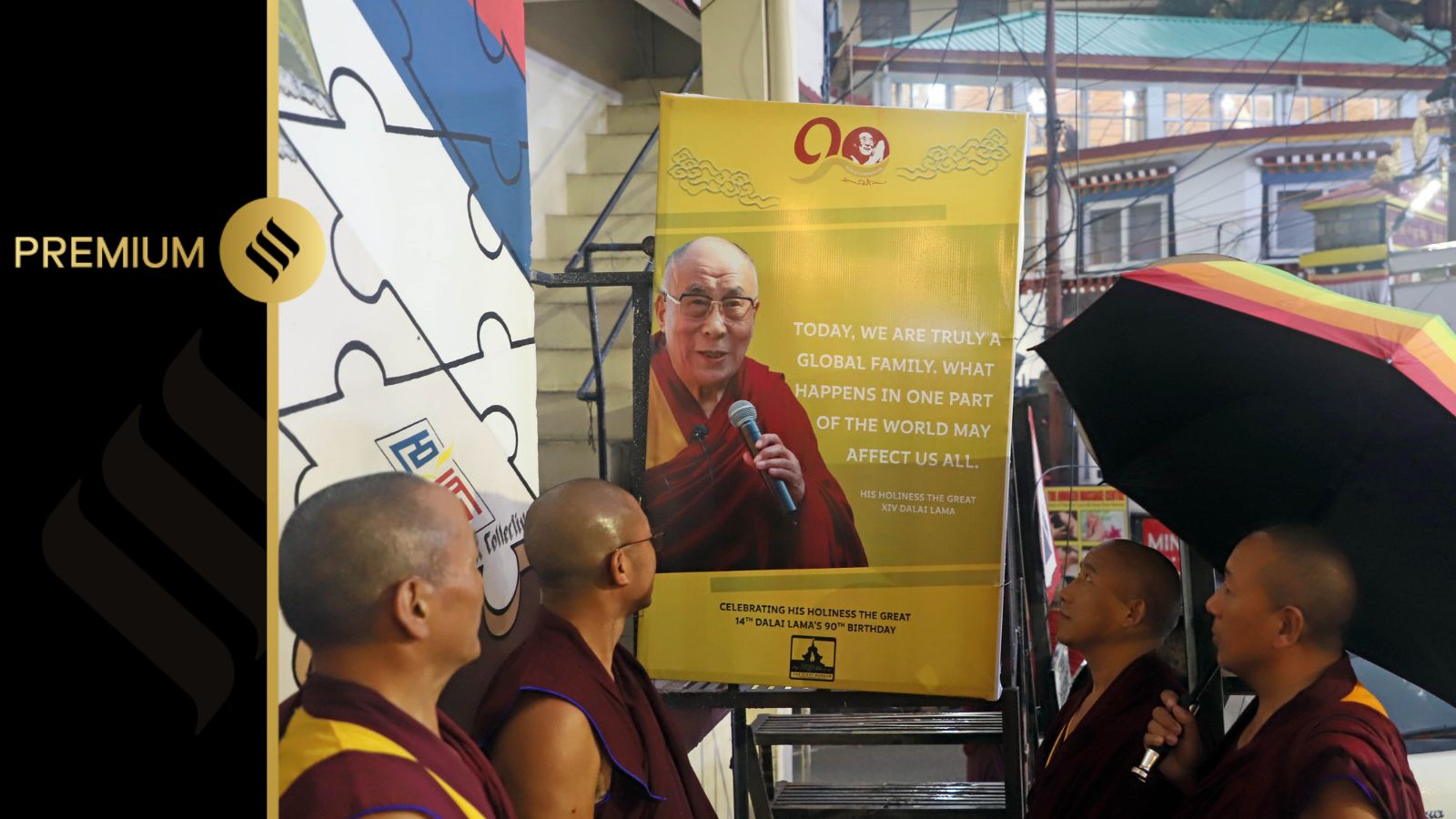 |
|
The 90th birthday of the Dalai Lama is a momentous occasion, marked by celebrations and reverence in McLeodganj, India, the heart of the Tibetan community in exile. However, beneath the jubilant surface lies a palpable sense of anxiety, stemming from the delicate geopolitical situation and the uncertain future of the Tibetan spiritual leadership. The article delves into the complexities surrounding the Dalai Lama's legacy, the ongoing tensions between Tibet and China, and the intricate role India plays in this dynamic. The narrative intricately weaves together the historical significance of McLeodganj, the spiritual importance of the Tsuglagkhang complex, and the looming question of the Dalai Lama's reincarnation, all against the backdrop of political maneuvering and international relations. The story begins with a vivid description of McLeodganj, painting a picture of a town nestled in the Dhauladhar foothills, where the scent of wet earth mingles with the anticipation of the Dalai Lama's birthday. It highlights the Swarg Ashram, the modest structure that served as the Dalai Lama's residence for eight years after his arrival in India in 1960, a place that remains untouched, preserving a vital chapter in Tibetan history. The narrative then shifts to the vibrant heart of McLeodganj, often referred to as Mini-Lhasa, where restaurants serve Tibetan cuisine, and crimson-robed monks stroll alongside visitors from around the world. The Tsuglagkhang complex, the Dalai Lama's current residence and monastery, is the focal point of the celebrations, drawing pilgrims and tourists alike. However, the festive atmosphere is tempered by the Dalai Lama's recent declaration regarding the institution of the Dalai Lama and the management of his reincarnation, a statement that carries significant weight in the context of Chinese interference. The Dalai Lama's pronouncement, made after a three-day Tibetan religious conference in Dharamshala, reaffirms the Tibetan community's spiritual independence, a message of defiance against Beijing's attempts to control the selection of his successor. This issue is central to the relationship between India, China, and Tibet, a relationship fraught with historical complexities and political sensitivities. The article explores the economic and spiritual significance of the Dalai Lama's presence in McLeodganj, transforming the once-quiet hamlet into an internationally recognized hub of Tibetan Buddhism, driving tourism, business growth, and cultural vibrancy. The surge in foreign arrivals to McLeodganj in recent years underscores the region's growing popularity and its dependence on the Dalai Lama's influence. However, the Tibetan issue remains a sensitive one for India, which granted the Dalai Lama asylum in 1959. While India maintains that the Dalai Lama is a revered religious leader with the freedom to carry out his religious activities, it refrains from officially supporting the Tibetan community's political activism, especially as it seeks to normalize relations with China. Beijing views the Dalai Lama as a separatist and insists on having a say in the selection of his successor, a move seen as a means of exerting control over the Tibetan people. China's rejection of the Dalai Lama's succession plan and its insistence on the involvement of the Chinese government highlight the ongoing tensions and the political stakes involved. The Tsuglagkhang complex, described as both sacred and deeply political, serves as the emotional and spiritual center of the Tibetan community in exile. Constructed in the 1960s, it has grown from a modest structure into a sprawling complex that includes the main temple, the Namgyal Monastery, the Dalai Lama's private residence, and his office. The temple's architecture, adorned with traditional Tibetan motifs, and the daily rituals of monks and devotees, reflect the enduring spiritual traditions of Tibet. However, amidst the preparations for the Dalai Lama's birthday, there is a palpable sense of sadness and urgency, stemming from the uncertainty surrounding his future and the potential interference of the Chinese government in the selection of his successor. The article features the perspectives of key figures within the Tibetan community, including Karma Yeshi, the Chairperson of the Public Service Commission in the Central Tibetan Administration, who shares his personal connection to the Tsuglagkhang temple and his concerns about the future. Dr. Lobsang Sangay, former CTA president, explains the reincarnation practice and emphasizes that the Chinese government has no role in selecting the Dalai Lama's successor. Professor Samdhong Rinpoche, former head of the Tibetan government-in-exile, reiterates that the institution of the Dalai Lama will continue according to Tibetan Buddhist traditions. The narrative then returns to the Swarg Ashram, the humble abode where the Dalai Lama first settled in India, a place that remains largely untouched, a reminder of the early years of exile. The article concludes by emphasizing the enduring legacy of the Dalai Lama's early years in exile, a legacy that continues to shape the Tibetan community in McLeodganj and beyond. The contrast between the bustling streets of McLeodganj and the quiet solitude of the Swarg Ashram underscores the complexities of the Tibetan situation, a situation marked by both celebration and anxiety, hope and uncertainty.
Source: Dalai Lama turns 90: At McLeodganj, why celebrations are tinged with anxieties
